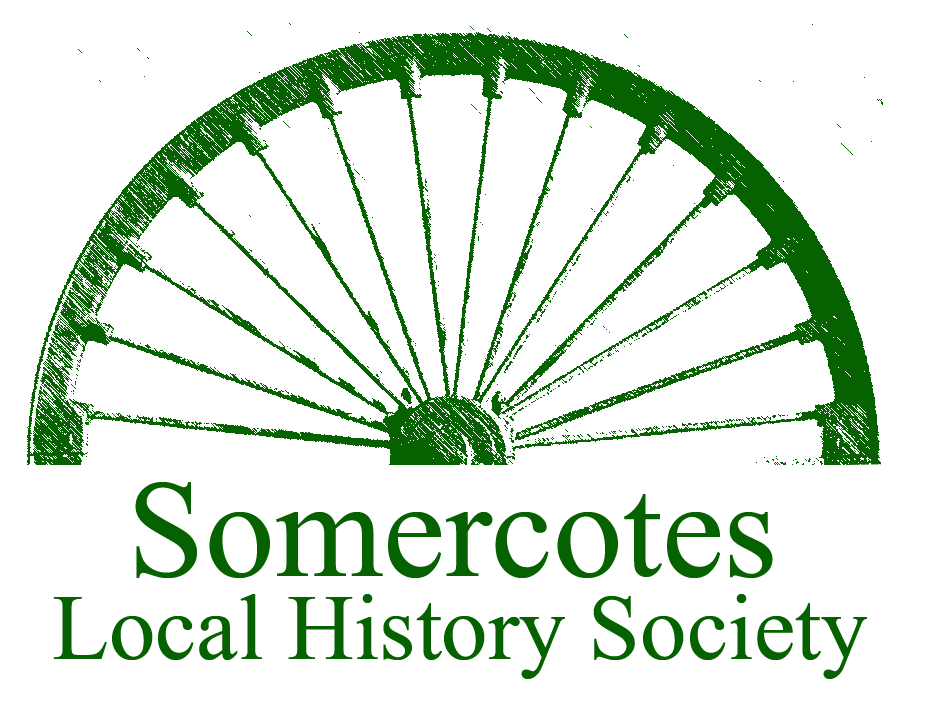






Time Capsule buried for future residents of Somercotes
by Hazel Mors on
Friday 25 March 2016
The theme for the children of Somerlea Park Junior School over the summer term of 2013 was the History and Geography of the local area and its community past and present. The project was called ‘Sensational Somercotes’.
For six weeks the children from Somerlea Park Juniors, classes 1 and 2, year 3 and 4, were involved in this project which consisted of looking at and identifying key aspects as to why our village was of great importance to the industrial revolution.
As a retired schoolteacher and a member of the Somercotes Historical Society, the school had very kindly invited me to participate in this project, firstly, as a guest speaker, then to plan and execute a guided walk and talk around the village. The children showed total commitment to this project right from the start, eagerly participating in researching the area, with the use of maps, identifying where they lived, what special and significant features are in Somercotes both past and present, whilst also gathering and collating information/ memories from their own families, members of the community and Somercotes Historical Society.
Even after liaising with the teachers involved in this project, I must admit I felt very nervous as I entered through the school gates, clutching my memory stick, with the all important PowerPoint and photographs I had put together for them. “What if they were not interested”, “what if they get bored”. I need not have worried; the teachers and children were amazing, Both classes were totally engaged with the historical aspect of Somercotes and the origins of our agricultural past, whilst understanding the huge significance and importance, historically, of our mining community, ironworks and brickworks industries, and how it shaped our landscape.
The children were eager to ask questions and discuss, what jobs people have done in the past, what reasons or industries have brought workers and their families to the village in the past, looking at the expansion of the village creating the need for housing and schools in the 1800s to the new factories and industries that we know today.
They were amazed, but slightly taken aback by the hardships endured by these workers, both at work and home, families of at least 10-12 living in a two up and two down terraced house, the lack of sanitation which bred diseases, causing many children to die at an early age. They stared at me in total disbelief, which turned to “ Eeergh Miss”, especially when I mentioned a pan lavatory at the bottom of the garden, which may I add was either emptied onto the vegetable garden as manure, or emptied during the night by two men. They were mortified by the thought of no running water, no bathroom, no heating, no television, no phones, no games, no i-pods. They thought it was even stranger that every member of the family shared the same water in a tin bath in front of a coal fire, if they were lucky, once a week, the head of the household first, covered in pit dust. The most sombre thought for the class was that boys and girls not much older than them would have been expected to go out to work. And many of them would have been their ancestors!!!.
The children were intrigued to learn that their own school Somerlea Park was originally built and paid for thanks to colliery and ironworks owners Hayden Oakes of Riddings House and Sir Charles Seeley in 1874.
Plans were finalised for me to take the children on a guided walk and talk tour around the village, two afternoons, one class at a time. We were accompanied by their teachers and teaching assistants. The children were very excited and, I must say. very well behaved. Using a series of old photographs so that the children could identify important features from the past, the walk consisted of Birchwood Lane Chapel, looking at the location of where Muckram Village and Colliery would had been, Pennytown, through to Cotes Park and the factories, discussing where Cotes Park pit and the brickyards once stood. We moved on past where Moorwood Colliery/ Aertex and the Greyhound track once stood , Copeland Place, Seely terrace, Beastalls, Cinema, the old School house, Church and finally back to school.
The children’s contribution along the route was fantastic; they were eager to ask questions and help identify places. Between us we managed to piece together where Cotes Park Hall/farm had been; we had the photograph, but no information to its whereabouts. We had a Scavenger hunt and fact finding challenge which was completed during the walk. Once back in school they were to write a brief story of Somercotes using the information from myself or what they had seen.
During the last week of term the teachers involved in this project, Miss Wileman and Miss Sharrocks, planned and executed the burial of a time capsule in the grounds of the school. I felt very proud at being invited to participate and to take photographs of the occasion. The project ended with the children, teachers, and myself, each choosing their own personal message and items to be buried at school and found by future generations.
Hazel Mors
